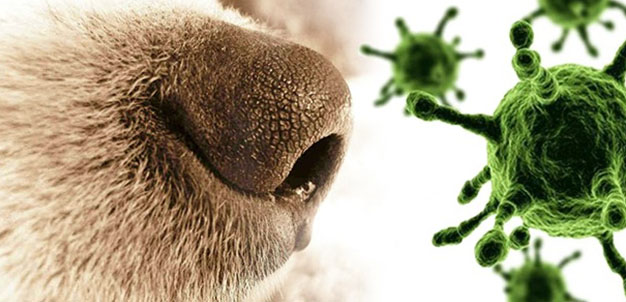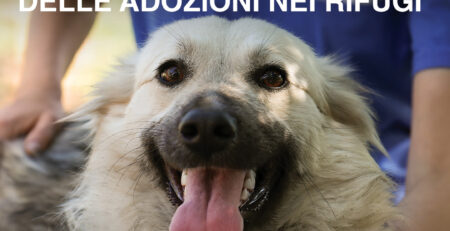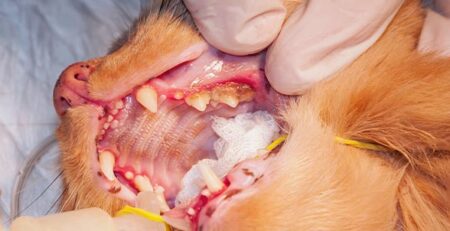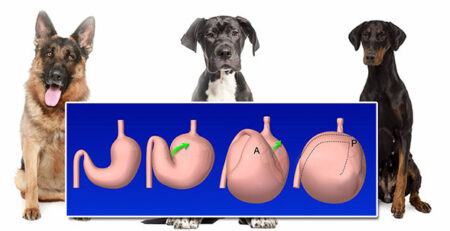Table of Contents
If your puppy has eye and nasal discharge, coughs, sneezes and is not vaccinated, he may have distemper. Know that of distemper, unvaccinated puppies die.
Canine distemper is a disease caused by a virus that affects dogs and for which there is no specific cure.
In puppies, the risk of mortality is 80%.
In adults, however, the course of the disease and the success of treatment depend on the responsiveness of the sick dog’s immune system.
The disease is caused by a virus that belongs to the same strain that causes measles in humans.
The successful outcome of therapy depends greatly on the responsiveness of the sick dog’s immune system.
How does contagion occur?
The virus is transmitted by contact with:
- saliva
- urine
- feces
And it can happen:
- in a direct
direct
By close proximity to sick animals and their secretions
- in an indirect way
indirectly
Through objects found to be contaminated with the virus from sick animals (infected bowls or food) or airborne infected particles
Where does contagion usually occur?
Spread and contagion are fostered by the promiscuity typical of environments frequented by many animals such as kennels, breeding farms, parks, and exercise areas.
These are places where, in the presence of many dogs, there are more likely to be some that have not undergone vaccine prophylaxis.
How do you reduce the likelihood of infection in high-risk places?
The virus has poor environmental resistance and is sensitive to UV light, heat, desiccation, and is rapidly inactivated even by common disinfectants.
To prevent uncontrolled spread, it is already a good rule to always disinfect and sanitize rooms and objects:
- box
- kennels
- bowls
- brushes
- leashes
- collars
These daily hygiene and cleaning practices minimize the chances of spreading the virus in the environment and minimize the chances of infection related to the possible presence of sick animals.
How does distemper manifest itself in the dog?
Distemper initially manifests with symptoms also common to other diseases (fever or catarrh).
Shortly after affecting the respiratory system by localizing in the dog’s tonsils, lymph nodes, and lungs, the virus settles in the bloodstream and affects the digestive system.
Finally, the disease produces its effects on the nervous system and leads the dog to death within a few days.
It can have varying degrees of intensity and manifest as hyperacute, acute, or subacute.
The hyperacute form
The hyperacute form generally affects younger animals, that is, puppies that are under three months old and have not yet been vaccinated.
The most common symptoms are poor appetite and diarrhea, cough, conjunctivitis, and tremors.
If action is not taken in time, the pathology in this case leads to the death of the animal
The acute and subacute forms
The acute and subacute forms of distemper, on the other hand, generally affect adult dogs or puppies that are more than three months old.
In the first stage, fever, coughing, sneezing, and mucus formation around the eyes appear.
The intestinal form, stage 2, manifests with dehydration, inappetence, vomiting, irregular stools, and hemorrhagic diarrhea.
Finally, in the form affecting the nervous system, convulsions, paralysis, depression, muscle spasms, and uncoordinated movements also come.
Therapy and treatments
Symptoms and course of the disease depend on the virulence of the viral strain, environmental conditions, age, and immune status of the patient.
The therapies implemented vary according to the specific condition of the animal but, unfortunately, are only supportive treatments: in fact, there is no real specific cure.
If the dog’s immune response is rapid and effective, there is complete elimination of the virus from the body.
Cured individuals eliminate the virus for about 60-90 days and remain immunized for life.
If the immune response is weak or insufficient, the virus spreads quickly and the risk of mortality is high.
Hospitalization is necessary
All treatments require, however, that the dog be admitted to a properly equipped facility where it can be kept in isolation and constantly monitored and to which they can be administered:
- Intravenous fluids to counteract dehydration
- Antibiotics to counter bacterial infections caused by weakening of the body
- Drugs to control seizures and muscle spasms
- Specific therapies if vision problems arise, to try to avoid blindness
Vaccine
While it is true that you are not directly responsible for the level of hygiene in the facilities your dog frequents, what definitely falls under your responsibility is attention to vaccination prophylaxis.
Specific vaccinations exist for distemper: they are not mandatory but are strongly recommended for all dogs, regardless of their lifestyle.
Refer to your Veterinarian to determine optimal timing and manner of vaccination for your dog, puppy or adult.
Please feel free to contact us for preventive examinations, vaccinations and practical advice.
The staff of La Veterinaria Clinic is available to you every day, every day including holidays h24 and with First Aid service from 8 pm to 8 am.
For the joy of seeing them HAPPY.











